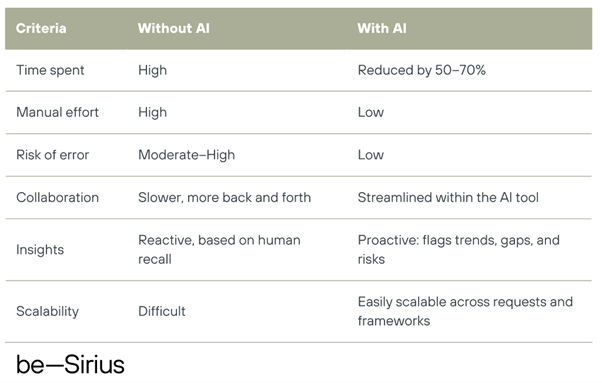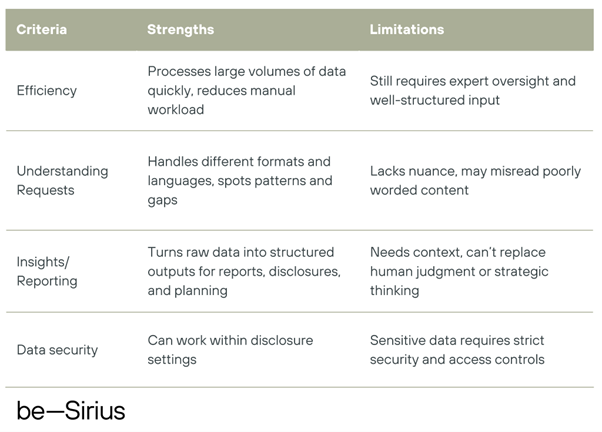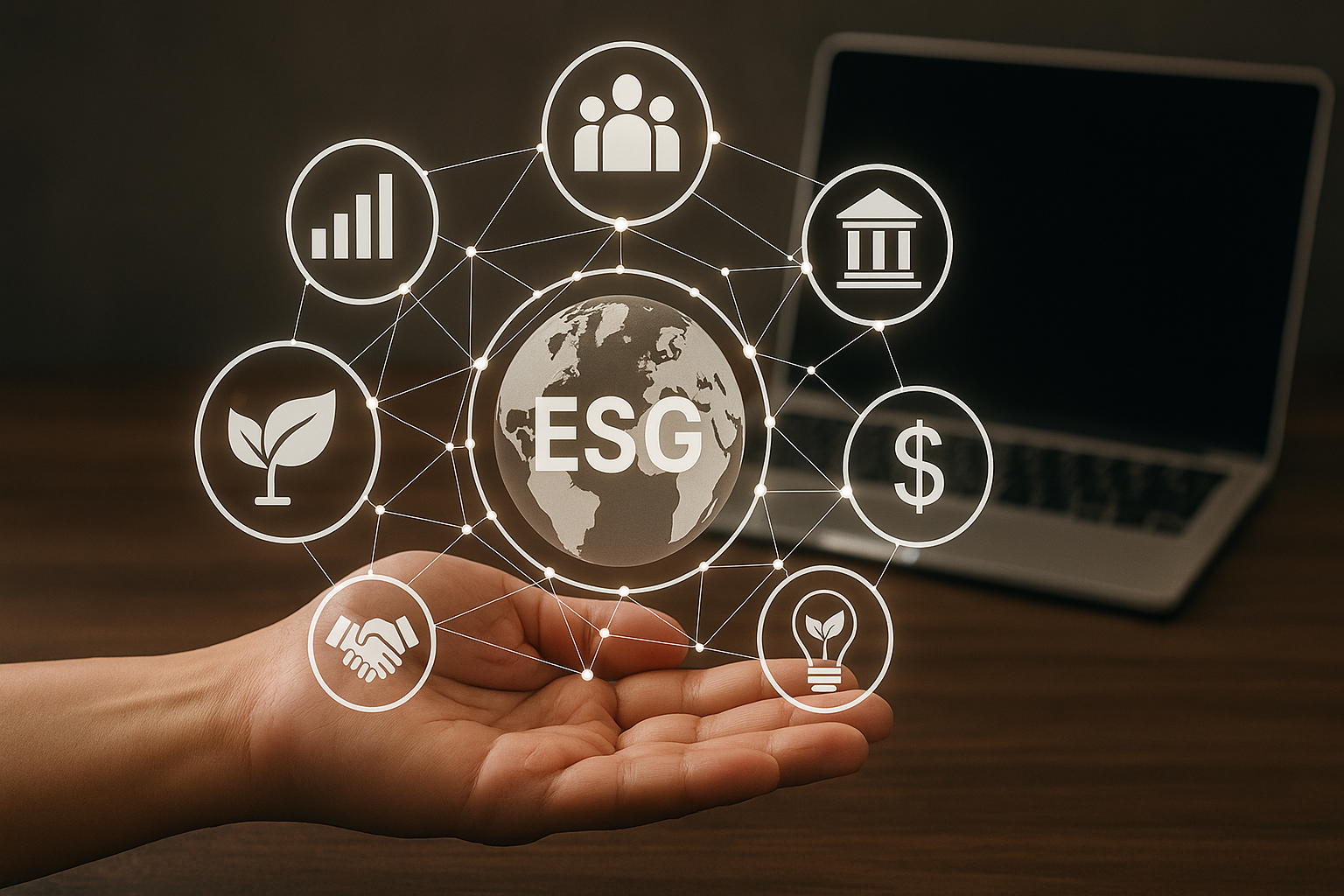By Galina Donnik, Chief Impact Officer at beSirius
How do you build trust with stakeholders without getting buried in spreadsheets?
Metal and mining companies, and the steel industry in particular, face a complex challenge: balancing the rising demand for essential materials with the growing pressure to operate sustainably and to be more transparent.
To ensure transparency, accountability, and inclusivity, steelmakers are actively engaged in sustainability and industry initiatives that provide guidance on ESG (environmental, social, and governance) disclosure. These include frameworks such as IRMA (Initiative for Responsible Mining Assurance), ICMM (International Council on Mining and Metals), LME (London Metal Exchange), ResponsibleSteel™, and the World Steel Association’s Sustainability Charter. At the same time, companies must comply with evolving and fast changing regulatory requirements like CBAM (Carbon Border Adjustment Mechanism) and IFRS (International Financial Reporting Standards) S1/S2, depending on their countries of operation. On top of that, they are constantly responding to ESG-related requests from customers and investors, ranging from broad assessments like CDP (Carbon Disclosure Project) or S&P CSA (Corporate Sustainability Assessment) ratings to highly specific, customized questionnaires.
Sustainability teams are tasked with driving decarbonization, managing community engagement projects (such as recycling, renewable energy, green technologies, human rights, and labor standards), and keeping up with a flood of incoming requests. These often arrive in different formats and languages, sometimes with poor translations or slightly varied phrasing even when the core question is similar.

Questions might include: “Is your company regularly reporting its GHG (greenhouse gas) emissions?”, “Do you have a carbon-neutral steel offering available today or planned in the future?” or “How do you ensure your supply chain is free from child labor?”
Multiply that by hundreds of variations, and it is clear why sustainability teams are stretched. Responding to the most important stakeholders often means putting other strategic initiatives on hold, simply due to the time and resources required.
In the era of uncertainty and constant changes in sustainability demands, how can this challenge be solved?
One option could be to create a single, detailed standard that covers all stakeholder requirements. But we all know how that usually goes: try to unify 14 standards, and you end up with a 15th. While there are some moves toward simplification, the regulatory and stakeholder landscape is still fragmented. So rather than aiming for full unification, what is actually needed is something that can adapt, something flexible enough to transform existing company data into the different formats required, while also flagging gaps and inconsistencies.
This is where tailored AI tools can help. AI can reduce the manual work of copy-pasting from one document to another. More than that, it can analyze incoming requests, spot patterns, and carry out gap assessments based on internal data. But this does not work out of the box. It requires a solid internal setup, clear disclosure rules, and the expertise of the sustainability team to ensure that what is shared is accurate, relevant, and safe, especially when it comes to sensitive information.

So how does AI help and what are the limitations?
First, AI brings clear efficiency gains. Large volumes of data can be processed in minutes, which significantly reduces the time teams spend on manual tasks. It also handles documents in different formats and languages, making it easier to analyze and compare incoming requests no matter how they are structured or translated. Another key advantage is its ability to turn scattered information into usable insights, helping teams make sense of what is being asked and what is missing, and use these insights in strategic planning. At the same time, there are important limitations. AI still lacks deep contextual understanding. It cannot replace the judgment of someone who knows the business, the material issues, and the company regulatory context. Working with sensitive data also brings risks; companies need to have clear rules and secure systems in place to control what gets shared and with whom. Finally, AI models are only as good as the data and assumptions behind them, so they need additional verification algorithms to avoid errors or built-in bias.
When tailored to specific needs and developed with an understanding of both the strengths and limitations, AI tools can be a good fit for complex tasks such as regulatory gap assessments, customer questionnaires, and ESG rating disclosures.

Case study: From requests’ chaos to strategic insights
Let’s review the case study of AI tool application in supporting a steel producer’s sustainability team using the beSirius platform.
A company facing growing ESG reporting demands implemented a solution to reduce pressure on the sustainability team and streamline how external and internal requests were handled. The company was receiving:
- 2-3 customer ESG questionnaires per week, often with 100-200 questions each
- Multiple ESG rating and certification requests
- 5-7 internal requests from departments such as risk, finance, and legal
- Regular assessments to ensure compliance with frameworks like IRMA, CBAM and CSRD (Corporate Sustainability Reporting Directive)
On the beSirius platform, the company created a Sustainability Twin™, a digital backbone that mirrors the company’s sustainability profile. The Twin was built around the company’s organizational structure, product portfolio, and operational processes. It incorporates all relevant sustainability data, including emissions, energy use, human rights, circularity, compliance, and updates regularly as new data becomes available.

Based on this setup, a tailored workflow was configured. It allows the sustainability team to easily review and validate AI-generated answers. These can be confirmed internally, discussed with relevant departments, or, in cases where supplier input is needed, shared through the same platform. This flow reduces back-and-forth and manual coordination, and ensures version control and traceability of disclosures.
The results have been substantial:
- All ESG requests are now answered on time
- Over 85% of responses are filled in by AI and then reviewed by experts
- The team saves approximately 30 hours per week on data collection and formatting
- 60 data gaps were identified and turned into follow-up actions
- All interactions are logged, enabling the company to track how ESG topics evolve across different stakeholders
Importantly, the platform analytics help the team spot patterns, highlighting recurring topics across customers, investors, and regulatory requests. This enables more proactive communication and helps align internal planning with external expectations.

AI tools continue to evolve, but they will not replace sustainability experts
They are becoming valuable partners, taking on repetitive, time-consuming tasks and helping to structure and analyze the growing volume of sustainability data. With AI support, teams can respond faster, track trends, spot gaps while building trust with the stakeholders and focusing their efforts on meaningful, high-impact work.

